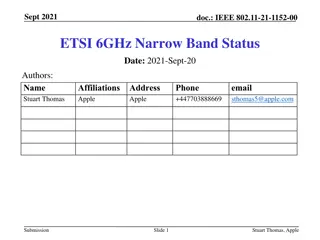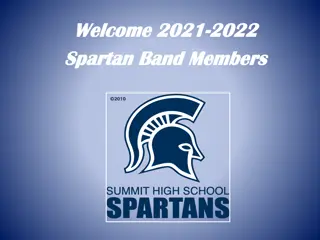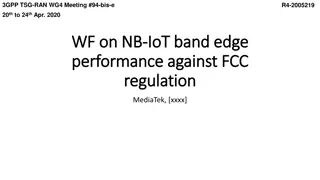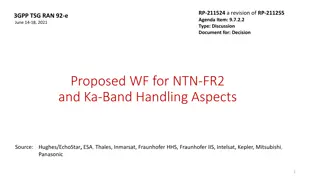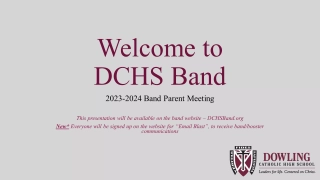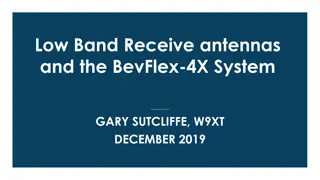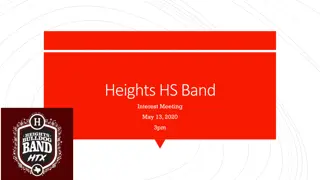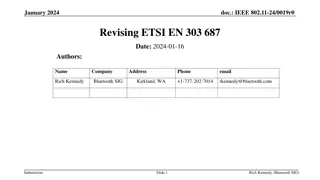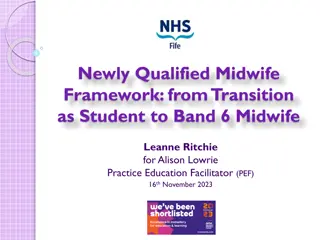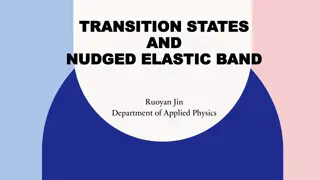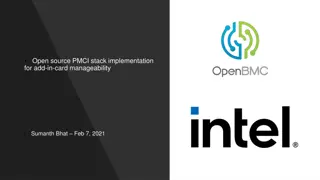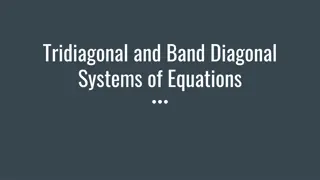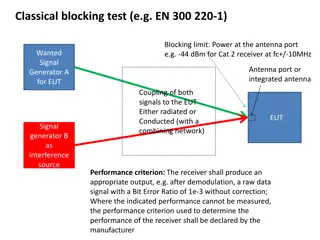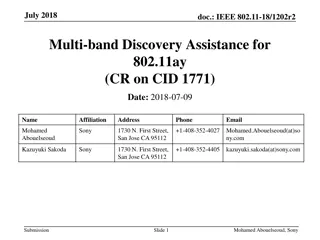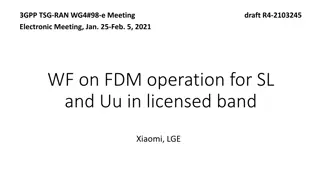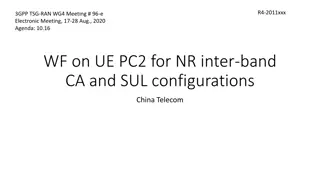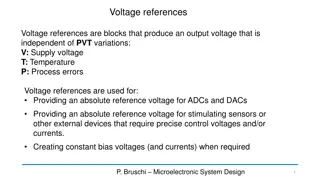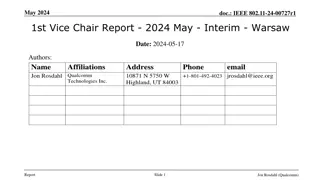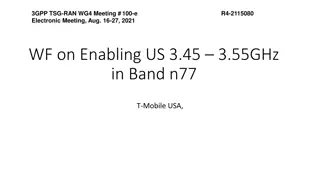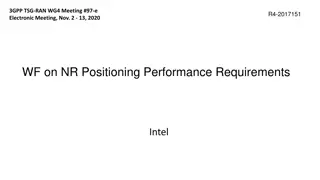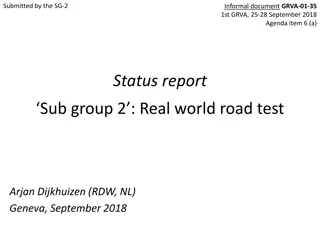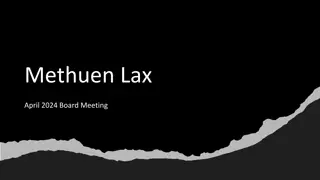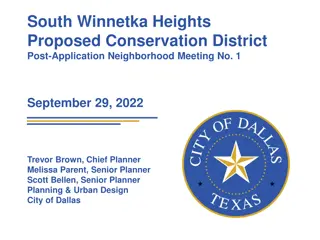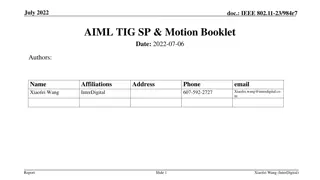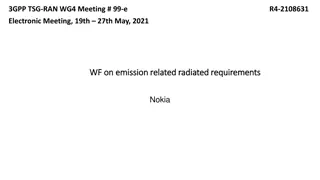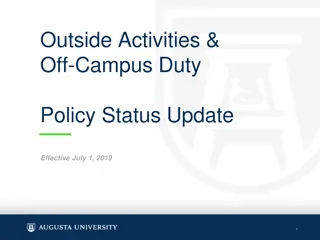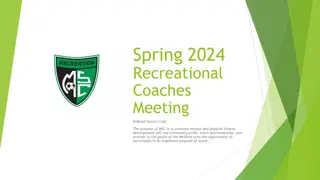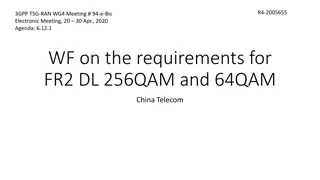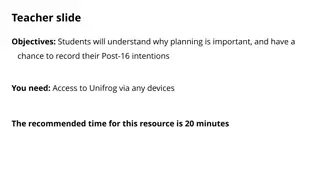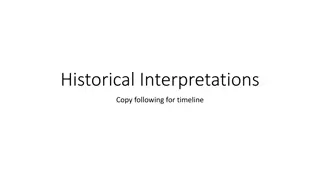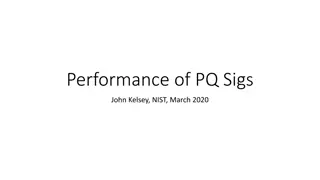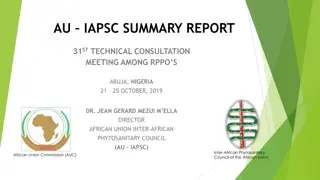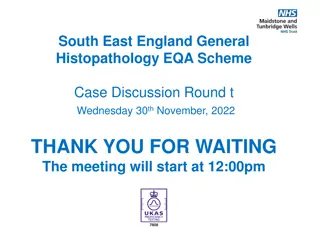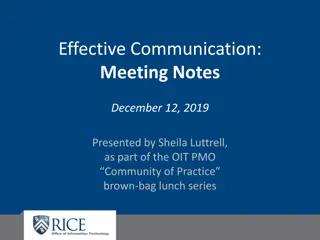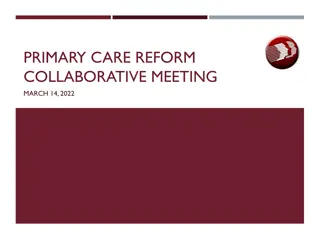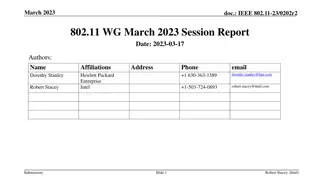Narrow Band Activities Post BRAN109e Meeting Summary
These slides provide a status update on Narrow Band activities following the BRAN109e meeting. They discuss the inclusion of AFH Non LBT DAA based on coexistence test results between Wi-Fi and Narrow Band Bluetooth systems. The documents cover non-adaptive and adaptive frequency hopping for VLP devices and request decisions on the proposals presented. Conclusions highlight the need for AFH in Narrow Band systems to address interference from Wi-Fi in various scenarios.
Download Presentation

Please find below an Image/Link to download the presentation.
The content on the website is provided AS IS for your information and personal use only. It may not be sold, licensed, or shared on other websites without obtaining consent from the author. Download presentation by click this link. If you encounter any issues during the download, it is possible that the publisher has removed the file from their server.
E N D
Presentation Transcript
May 2021 doc.: IEEE 802.11-21-0814-r0-coex ETSI 6GHz Narrow Band Status Date: 2021-May-10 Authors: Name Stuart Thomas Affiliations Address Apple Phone +447703888669 email sthomas5@apple.com Apple Submission Slide 1 Stuart Thomas, Apple
May 2021 doc.: IEEE 802.11-21-0814-r0-coex Abstract - These slides gives a status of the Narrow Band activities post the BRAN109e meeting Submission Slide 2 Stuart Thomas, Apple
May 2021 doc.: IEEE 802.11-21-0814-r0-coex Background In November 2020 the regulations [1] were amended to include Narrow band systems operating in the VLP category. An extract of the draft regulations is below: Submission Slide 3 Stuart Thomas, Apple
May 2021 doc.: IEEE 802.11-21-0814-r0-coex Summary of Technical Submissions to BRAN109e [BRAN(21)109e003r1] Document proposing inclusion of AFH Non LBT DAA based upon lab test of coexistence between 80MHz Wi-Fi system and Narrow Band Bluetooth protocol-based system (Narrow Band BW 4MHz) [BRAN(21)109e004] This document discusses non-adaptive and adaptive frequency hopping for very low power (VLP) devices and requests decisions for the proposals contained herein [BRAN(20)109e008] This document contains simulations of a Wi-Fi-BT test setup Submission Slide 4 Stuart Thomas, Apple
May 2021 doc.: IEEE 802.11-21-0814-r0-coex BRAN(21)109e003r1 The context of this document was demonstration by measurement of a NB Bluetooth based protocol system (Non LBT DAA) with AFH deliberately disabled and the impact to Wi-Fi system under two narrow band scenarios: (Tested in 5150 5250MHz, 80MHz Wi-Fi Channel, 80MHz Narrow Band Hopping) : - BW=4MHz, High Duty Cycle 83%, Tx Power 7dB s > Wi-Fi - BW=1MHz, Low duty cycle 18%, Tx Power 7dB s > Wi-Fi Conclusions: - Low Duty Cycle - no impact on Wi-Fi systems, even without AFH - High Duty Cycle - In corner cases some degradation to Wi-Fi, however it s only seen in short distance situations and only when AFH is not deployed - Narrow band will need AFH to be able to remove narrow band transmission channels due to Wi-Fi interferers in all scenarios. - - Submission Slide 5 Stuart Thomas, Apple
May 2021 doc.: IEEE 802.11-21-0814-r0-coex BRAN(21)109e004 Non-Adaptive Frequency Hopping - Proposal 1: Duty cycle is limited according to equation, where MU shall be less than 10% - DC = min[MU 25 mW/Pout; 50] % - Proposal 2: Requirements concerning duty cycle, Tx-sequence and Tx-gap requirements are applicable to non-adaptive NB FH equipment irrespective of operating transmit power. - Proposal 3: The maximum Tx-sequence time shall be 5 ms. - Proposal 4: The minimum Tx-gap time shall be 5 ms. - Transmission Type LBE/FBE SCS Non-adaptive NB FH Non-adaptive NB FH Pout (mW) 100 25 2.5 Duty cycle (%) 5 10 50 Interference Quotient 500 250 125 Adaptive Frequency Hopping - Proposal 5: For adaptive frequency hopping DAA mode, the maximum frequency dwell is 40 ms - Proposal 6: For adaptive frequency hopping LBT mode, the maximum frequency dwell is 60 ms - Submission Slide 6 Stuart Thomas, Apple
May 2021 doc.: IEEE 802.11-21-0814-r0-coex BRAN(20)109e008 This proposal was a late submission, aiming to replicate through simulation the real measurements from contribution BRAN(21)109e003r1 Conclusions: - There are some clear differences between simulations and the real measurements, but this simulation suggests that NB frequency hopping can cause major throughput and latency degradation for Wi-Fi links under some conditions. FHSS without LBT does not provide an adequate sharing mechanism and NB needs further study - - Submission Slide 7 Stuart Thomas, Apple
May 2021 doc.: IEEE 802.11-21-0814-r0-coex Discussion - Lots of discussion around all the proposals - Differences between simulations and measurements that need to be understood - User cases - No DAA or LBT systems - Requests for additional measurements - Wi-Fi impacting Narrow band - Need to agree an adequate solution for narrow band - Avoid the free for all via notified body route - Reduce the scope of narrow band allowances Submission Slide 8 Stuart Thomas, Apple
May 2021 doc.: IEEE 802.11-21-0814-r0-coex Next Steps - Study updates - Full buffer measurements, additional MCS rates - Minimum COT times needed - Ad-hoc meetings - Two specific sessions defined before BRAN110 (18-25th June 2021) Submission Slide 9 Stuart Thomas, Apple
May 2021 doc.: IEEE 802.11-21-0814-r0-coex References [1] ECC Decision (20)01, On the harmonised use of the frequency band 5945-6425 MHz for Wireless Access Systems including Radio Local Area Networks (WAS/RLAN), Approved 20 November 2020 Submission Slide 10 Stuart Thomas, Apple


